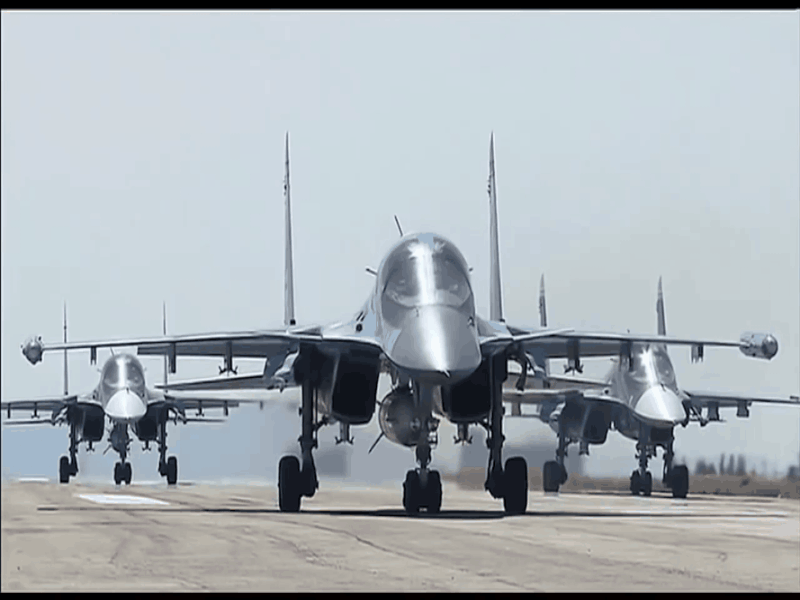Another batch of Su-34 fighter jets has been commissioned by the Russian military

Su-34 platypus
In the past 20 years, the "sideguard" family has accounted for the vast majority of the fighter jets equipped by the Russian Aerospace Forces. Among them, the Su-35 and Su-30 have the largest number of equipment, but the Su-34 fighter bomber, known as the "platypus". This unique looking fighter jet is highly favored by the Russian military for its long range and powerful attack capabilities.
On December 22nd, the Information and Mass Communication Department of the Ministry of Defense of the Russian Federation announced that a batch of newly manufactured Su-34 fighter jets have arrived at the Lipetsk National Aviation Personnel Training and Military Test Center located in western Russia, 240 kilometers southeast of Moscow. These "platypus" flew directly from Novosibirsk to Lipetsk, covering a total distance of 4000 kilometers (however, according to calculations on the map, the straight line is only 3000 kilometers).According to the Russian BMPD military blog, these Su-34s were produced under a 3-year contract signed in June 2020 between the Russian Ministry of Defense and United Aircraft Corporation for the production of 24 aircraft. They were produced by the Novosibirsk "Chekalov" aviation factory according to the 2021 production plan. In November of this year, the first batch of 4 aircraft were delivered to the 277th Bombing Aviation Regiment of the Eastern Military Region stationed at Kurba Airport in Khabarovsk (near Komsomolskaya on Amur), and this time it was delivered to the 968th Independent Mixed Aviation Regiment in Lipetsk.
From this, it can be seen that although people usually hear about the production of military aircraft or passenger planes and use "how many planes are produced per month" to calculate, the overall production cycle still takes several months. According to the convention of the domestic aviation industry, the production of a military aircraft involves multiple stages of material preparation and production. Manufacturing alone is divided into three major processes: component production, assembly (component assembly), and final assembly. After the final assembly is completed (leaving the factory), a test flight team stationed in the aviation factory must conduct a test flight before signing and accepting the delivery to the team.The Su-34 fighter jet, originally called the Su-27IB, was designed as a twin seater fighter bomber (commonly known as the Frontline Bomber in Russia) and began development in 1986. On April 13, 1990, the first prototype of the Su-27IB, T-10V-1, completed its maiden flight. However, due to the poor economic situation in independent Russia, mass production did not begin until 2008 (32 aircraft). At this time, it had been renamed Su-34 and officially entered service with the Russian military after passing national tests in 2014.

The Su-34 is the successor to the Su-24 "Fencer" variable sweep wing supersonic fighter bomber, which was also manufactured by the "Chekhov" aviation factory.Due to its impressive performance, the Su-34 is the most widely equipped derivative of the Su-27 in the Russian military after independence, with over 122 units as of 2020. The Su-35 produced by the Gagarin Aviation Factory in Komsomolsk is equipped with approximately 97 units (as of 2021), the Su-30SM (India's Su-30MKI for Russian use) manufactured by Irkutsk Aircraft Manufacturing Factory has 113 units (22 belonging to the Black Sea Fleet's naval aviation), and the Su-30M2 (China's Su-30MKK for Russian use) produced by Komsomolsk Factory has only 20 units, indicating that the Su-34 is the best-selling model.In terms of ground attack, the Su-34 is a skilled fighter. Its "duckbill" is equipped with a Sh-141 passive phased array airborne fire control radar, which can lock tanks and armored vehicles up to 75 kilometers away in ground attack mode and has terrain automatic tracking mode. Compared with the Su-24, the Su-34 can use R-77 advanced mid-range radar guided air-to-air missiles for self-defense without the need for other fighter jets to escort, and can use a variety of precision strike weapons outside the defense zone in ground attack missions.
In the second half of 2015, the Russian military intervened heavily in the Syrian civil war. Over the course of six years, the Russian Aerospace Forces took turns sending Su-34 fighter jets to the Hmeimin Air Base in Latakia Province.

In combat, it first used the KAB500S satellite based navigation missile to strike extremist armed targets. The Su-34 has a "Platan" electro-optical stable aiming system (foldable) behind the landing gear door, so there is no need to attach an electro-optical aiming pod. With advanced fire control computers, it can also deliver unguided aerial bombs and rockets with high accuracy.
Source: Military of Strong Countries